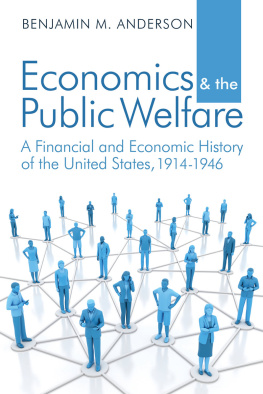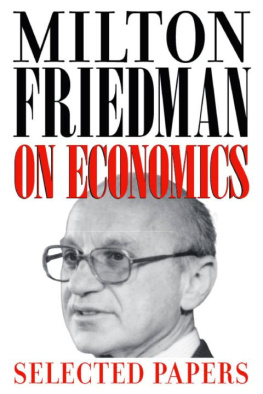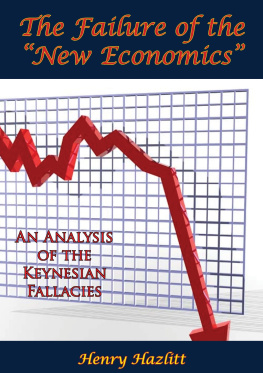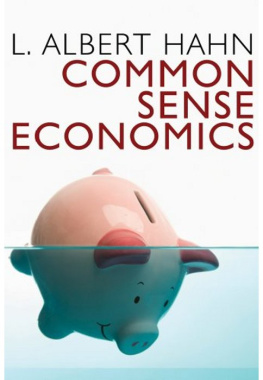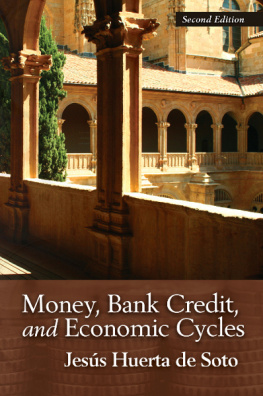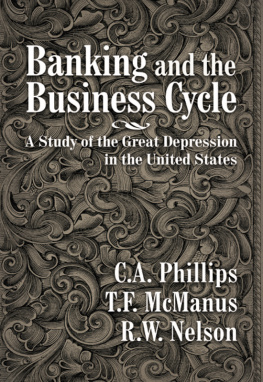PART I
WORLD WAR I
PART II
THE POSTWAR BOOM, CRISIS, AND REVIVAL, 1919-1923
PART III
THE FIRST PHASE OF THE NEW DEAL, 1924-1932
Chapter 19
The Causes of and the Responsibility for the Excess Reserves
Factors Feeding and Depleting Member Bank Reserves . It is possible to measure with a great deal of precision the factors involved in the increase or decrease of member bank reserves. An Analysis of the Money Market presented a technique for doing this which some of the readers of this book will study. For example, an increase of money in circulation operates to reduce member bank reserves and to tighten the money market. This is regularly true in the autumn, when 300 or 400 million dollars may go out, reaching a peak at Christmas time, followed in the two or three weeks thereafter by a heavy backflow of money to the banks, which enables them to build up their reserves again and eases the money market. An ordinary summer holiday, such as the Fourth of July, may mean an increase of 75 millions in money in circulation, followed in two or three days by a return of the money to the banks. There are many other factors.
The present chapter, however, avoids technicalities as far as possible, and does not discuss those factors which show little variation or which show only a normal seasonal variation. It concentrates attention on the two main significant variables between the middle of 1922 and early 1928, which were: (1) the growth of our gold monetary stock, and (2) the volume and composition of Federal Reserve credit, primarily governed by Federal Reserve policy.
Gold . The gold monetary stock of the country is controllable by five main factors: (a) gold imports, (b) gold exports, (c) gold production in the United States, (d) industrial consumption of gold in the United States, and (e) earmarkings and release from earmark of gold at the Federal Reserve banks, for foreign account. A foreign central bank, which has a deposit account with a Federal Reserve bank, might instruct the Federal Reserve bank to debit its account and earmark gold. The gold would then be the property of the foreign bank, and whether it were subsequently exported or not, it would be effectively withdrawn from the gold monetary stock of the United States. Conversely, a foreign bank with gold under earmark might instruct a Federal Reserve bank to release the gold from earmark and credit its deposit account, which meant that the gold would become the property of the Federal Reserve bank, part of its gold reserve, and part of the American gold monetary stock.
Greshams Law and Gold Imports1920-1924 . From October, 1920, to August, 1924, we gained gold steadily from the outside world, our monetary gold stock rising from $2,581,000,000 to $4,234,000,000. The increase from the middle of 1922 to August, 1924, was from $3,498,000,000 to $4,234,000,000, or $736,000,000. Part of this gold would have come in any case, because of the great pressure that Europe was under to pay urgent debts here, but after the great liquidation of 1920-1921 the controlling factor was the operation of Greshams Law.
Greshams Law is an ancient principle, known apparently to some of the Greeks, but taking its name from Queen Elizabeths financial adviser, Gresham, who is said to have explained it to the Queen. It is the principle that bad money drives out good money, and that inferior money drives out better money. It operates particularly when a paper money, formerly redeemable in gold, is no longer redeemed in gold, and consequently depreciates below its gold parity.
Virtually all the important countries of Europe, and most of the important countries of the world outside of Europe, except the United States, had restricted gold payments or had ceased to make them. The paper currencies of the major countries outside the United States were depreciated, and fluctuating in value, in the whole period following the war down to late 1924. Under these circumstances additional gold would not go to the monetary reserves of those countries, and such gold as was free to move tended to leave those countries. A man would not take gold to the Bank of England to exchange it for a Bank of England note, because he would lose 10% of its value thereby. He would not turn in gold to the Bank of France when he thereby lost more than half of its value. He would not use gold in paying debts in England or France. He would use the cheaper paper money instead. He would send his gold to the United States, where he could turn it in to the Federal Reserve bank in exchange for a currency which he could next day or next month or next year redeem in gold at the full face value.
Dangerous Concentration of Gold in United States . This made a dangerous situation. It meant that we were getting a great part of the newly mined gold of the world. It was a situation which could be expected to correct itself when two or three of the other main countries came back to the gold standard, and which did indeed in large measure correct itself when Germany came to the gold standard under the Dawes Plan in 1924, followed by the return of the Dutch guilder and the Swiss franc to par, and in the spring of 1925, by Englands resumption of gold payments. When France came back to the gold standard in 1928 we lost gold heavily for a time.
It was widely recognized in the period following the war and throughout the 1920s that a considerable measure of redistribution of the worlds gold was needed, and that the way to accomplish this was to restore the full gold standard in several major countries, so that they would compete with us and one another for the floating supply of gold, and so that at least the newly mined gold would go to those countries whose gold reserves were most in need of it and whose interest rates were consequently high enough to attract it.
Peak of Our Gold Holdings Reached in August, 1924 . The approximate peak of our gold monetary stock in the expansion period of the 1920s was reached in August, 1924, at $4,234,000,000. There was a sharp drop in late 1924 and early 1925, due in considerable part to the shipment of gold to Germany following the Dawes Plan loan, and a gradual rise to a slightly higher peak of $4,323,000,000 in April, 1927, followed by a steady decline to $3,822,000,000 in April, 1928which month, as we have previously seen, marked the peak of our 1922-1928 bank expansion. Incoming gold, in other words, ceased to he an important factor feeding member bank reserves after August, 1924 .
Trustees of Worlds Gold . We were, and for a time we recognized that we were, trustees for the worlds gold. We had no right to merge it so inextricably with our own financial system that we could not certainly and easily return it. It was in a high degree imprudent so to merge it with our own affairs that we could return it only by means of a painful liquidation. Certainly it was unwise in the extreme to build upon it an unusual and illiquid kind of bank credit. It was unwise in the extreme to adopt a policy which would expand bank credit in capital uses, such as real estate mortgage loans, stock and bond collateral loans, bank investments in bonds, and the like. And yet we did these things.
Unsound Federal Reserve Policy . Had the Federal Reserve System followed orthodox central bank tradition, using no discretion at all but merely obeying the rules, we should have averted the disasters that followed. The orthodox tradition called for rediscount rates above the market rates and for strictly limited use of open market operations. The most important of these two rules related to open market operations.
Rediscount Rates Below Market Minor Factor . Federal Reserve rediscount rates were held below the market throughout this period, meaning by the market the prime customers rate at great city banks.

